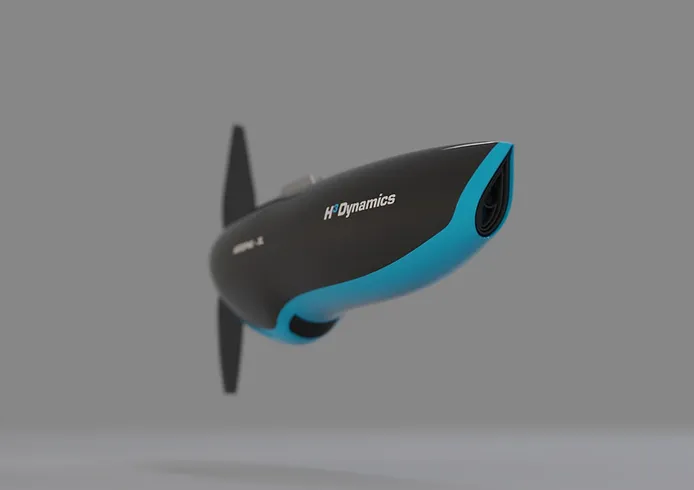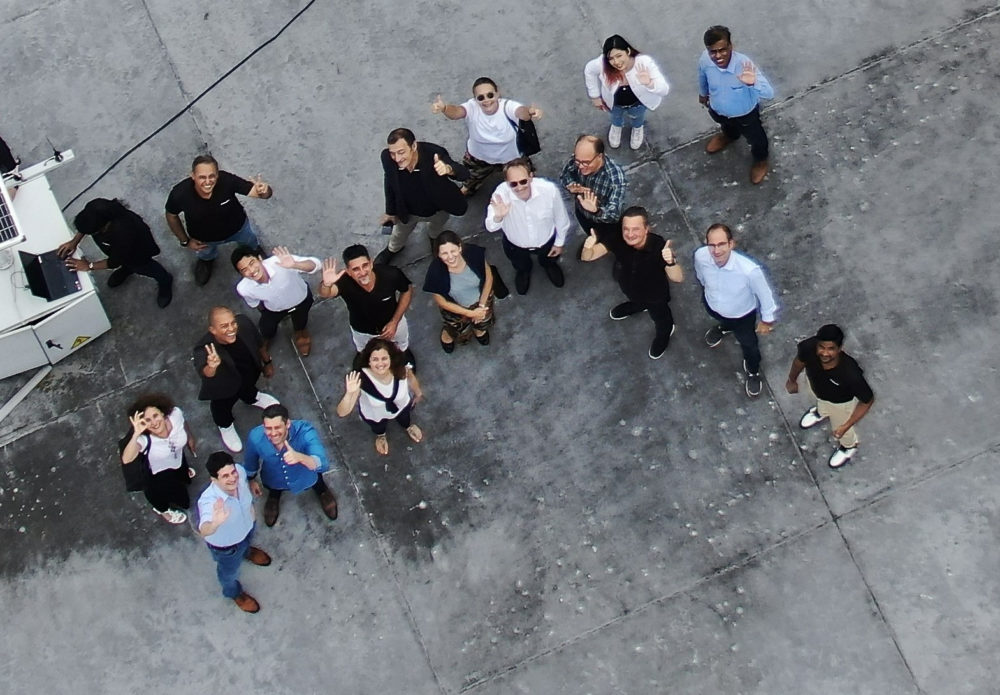Taras Wankewycz, H3Dynamics : preparing for hydrogen-powered flight – December 2022
Taras Wankewycz, H3Dynamics : preparing for hydrogen-powered flight – December 2022
On Friday 2 December 2022, members of the Futura-Mobility think tank met with all the team from H3Dynamics during the learning expedition to Singapore. This company, created in Singapore in 2015, has 94 employees, has just set up in France, in Toulouse, and is in the process of raising funds.
Its founder, Taras Wankewycz, a French ‘serial deeptech’ entrepreneur, took the time to explain to Futura-Mobility his vision of entrepreneurship and the steps his company plans to take. Fascinating!
H3Dynamics, “think big, start small, but start now!”
The company has high ambitions to enable hydrogen-powered aviation, yet the boss clearly has a map in mind of the different steps to be taken, around which he orchestrates the different activities of H3Dynamics. His philosophy is clear, “we must be profitable really quickly on mature activities in order to finance R&D on medium and long term activities.” Some activities are in an intense commercial phase, others in development or even at the research stage.
So H3Dynamics is developing four activities:
(1) Digitisation of buildings for inspection or maintenance purposes. This activity has kicked off well in Singapore. The offer involves using drones piloted by humans. It is coupled with a cloud service based on Artificial Intelligence (AI) to rapidly process data and provide intelligence. This offer is now commercialised.
In Singapore, H3Dynamics is working, for instance, with Groupe Bouygues on inspecting buildings by drone. At the city port, drones are used to take photos of the colour of the water to check ships are not degassing, as well as inspecting port buildings on shore. With the Housing and Development Board, the government agency for on-site management of social housing, the company scans the buildings, inspects them and makes a diagnosis so the agency can organise (manual) maintenance operations. The stakes are high because 80% of Singapore’s population is housed in these buildings, which were built in the 1960s and last underwent major renovation work in the 1990s.
With regards the application part – used to process data and restore the information digested – “there are already hundreds of existing solutions that have been created,” explains Taras Wankewycz. So H3Dynamics has come up with the idea of designing a digital platform that integrates all existing image analysis software apps. “It would be impossible to redo everything, so the plan is to integrate the solutions, like the apps in your smartphone,” says the company founder. The business model is quite clear: pay-as-a-service. The on-site box will allow app developers to expand their customer base and work with H3Dynamics on an integrated offer. These developers could be start-ups from all over the world – working on specialised applications from vine disease detection (mildew, powdery mildew, blackrot, etc) to soil analysis – or large industrial companies that could sell externally systems developed initially to meet their own, internal needs.
(2) The second activity developed by the Singaporean company is automation of drone missions to limit human intervention in the inspection process. Indeed, today, while drones are not yet widely used in cities, there is already a shortage of drone pilots. Meanwhile, demand for digitisation of industrial maintenance processes is growing.
We had the opportunity to attend a demonstration on the roof of the company building. The ‘DBX’ system works with any brand of drone. Since Americans and Europeans don’t want to use Chinese drones, the platform must be agnostic in this respect. The technology works with 5G, or by satellite (Inmarsat, Starlink…). In Australia, for instance, H3Dynamics has as a client large and isolated solar farms, connected via Starlink.
In France, H3Dynamics belongs to Systematic, the European DEEP TECH cluster based in the Paris region, with Thales as its main partner. Together they are creating ‘beyond visual line of sight (BVLOS)’ missions, i.e. operated as automated missions beyond the view of the drone pilot. “This breakthrough is a major milestone to be reached,” explains Mr Wankewycz.
(3) “The drone market needs autonomy, and extended drone flights,” he says. Hence the company’s third activity involves the transition from lithium-ion batteries, that last for 30 minutes, to using hydrogen, thanks to which drones could reach 3 to 30 hours of autonomy, and ranges of up to 3,300km.
It should be noted that Mr Wankewycz is no stranger to hydrogen! He is the founder of Horizon – one of the world’s largest fuel cell producers, also at the origin of the Nasdaq-listed Hyzon Motors in the US.
Hydrogen-powered flight began with commercialising propulsion systems for fixed-wing drones, airships, vertical take-off and multi-rotor UAVs for customers in France, the US, Australia, and Japan.
Since then, another trial ran in January 2023 together with ISAE-SUPAERO in Toulouse, with a view to integrating liquid hydrogen storage systems. This would further extend autonomy – with the aim of crossing the South Atlantic by 2025 (3,300 km and over 30 hours flying time), retracing the route of the legendary pilots Mermoz and St Exupéry.
(4) The company’s fourth and final activity is currently in the research stage. It concerns powering tomorrow’s aircraft with hydrogen. For Mr Wankewycz, “this goal will perhaps be reached in about twenty years from now, say between 2035 and 2050.”
H3Dynamics has already patented its distributed and collaborative pod system, integrating both the fuel cell, hydrogen tank, and all the electronic control systems too. The advantage of this pod is that its energy component can be exchanged when there is no more hydrogen, so enabling rapid refuelling and a centralised refuelling logistics system. The change is likely to be imminent, since a initial test was carried out in July 2022. Two, small format pods, each 0.3kW, were used to fly a cargo drone with a cargo capacity of 30 litres. With a range of up to 400km on gaseous hydrogen, the first step towards hydrogen-powered air mobility is close at hand. The company has already taken its next step, developing a 150kW pod for integration into electric-powered light aviation.
According to the entrepreneur, logistics will be the main market for this hydrogen-powered aviation, at least initially. “For instance, for a major global logistics group, 66% of its carbon impact is linked to air transport,” he says.
In addition to the technology, obtaining flight certification will also be key, “especially if the flight is unmanned,” explains Mr Wankewycz.

It’s quite clear how the activities are nested together. The technological advances of the first serve the development of the ones that follow after.

Philosophy of evolutionary business development.
According to Taras Wankewycz, we must “think big, start small, but start now!” Or to put it another way: “in the famous fable, it’s the tortoise that wins the race…”
He learned this philosophy of business development in China, when starting out as an entrepreneur. It’s a question of developing and marketing quickly, using a very fast innovation method, “because in China you have to think you are competing with thousands of companies with the same goal as you!”
Another principle: it is easier to develop on small objects rather than larger, more complex ones. So Horizon started out with a very small fuel cell (see first photo in this article) to test the technology, then scaled up as it became successful. According to the entrepreneur, it’s a question of “looking further ahead to the most difficult goal because you gain strength when you move forward with less complex initiatives. We need this force of inertia.” Horizon first sold miniature discovery kits and experiments for secondary schools before moving on to much larger machines, now 250kW modules for hydrogen-powered trucks.
It is interesting how this approach is exactly the opposite of the philosophy of the Silicon Valley tech ecosystem, which tackles difficult goals first, while awaiting future profitability in a large market segment that needs massive funding at the beginning in the hope of getting there one day. Or even the Israeli tech ecosystem, which tackles disruptive technology issues before thinking about the market segment.
Occupy the skies to advance regulation of airspace occupancy
For all the activities developed by H3Dynamics and its competitors, the issue of regulating airspace occupancy is crucial.
Mr Wankewycz’s idea is to create the need for regulation by integrating as many drones as possible into Singapore’s airspace. The authorities will only regulate if there is an issue to solve, like many drones in the sky. The first two activities atH3Dynamics are playing a part in creating this high volume.
It should be noted that every drone flight is currently regulated individually, which makes for a particularly cumbersome procedure. The authorities need to define a framework for drone flights. Together with Thales, H3Dynamics is preparing a proposal for an automated regulatory system equivalent to the Directorate General of Civil Aviation in various countries.
For the company boss, putting drones into urban and rural airspace needs to be regulated. In Singapore and Asia in general, “it is digitisation of buildings that will build up the volume needed, elsewhere it may well be small delivery drones instead.”
So everything has been thought out at H3Dynamics!
Keep a close eye on this tortoise…

Articles similaires:
Il n’y a pas d’article similaire.
